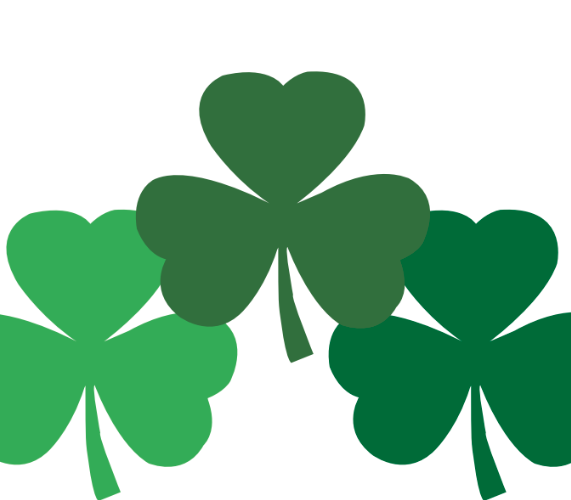What Does It Mean To Be Lucky?
March 17, 2020
Being lucky means getting the last spot left in the lot. It means getting a perfect score on a test that one did not study for. Mar. 17, also known as St. Patrick’s Day, the U.S. becomes an “emerald country” for the day. On St. Patrick’s Day, Irish tradition says that being lucky, or having luck, is drowning the shamrock.
Drowning the shamrock is when a shamrock gets dunked into a glass of whisky and, later, drunk by someone. Once said person drinks all of the whiskey, he/she takes the shamrock and throws it over his/her left shoulder in hopes that they will find luck in any future endeavors.
On St. Patrick’s Day, the shamrock is not the only thing that is said to be lucky; devil bread serves as another common symbol of luck. Devil bread, a homemade bread made with flour, baking soda, butter and salt, has embodied luck in Irish culture for years. Once baked, a hole is cut at the top of the bread in the shape of a cross. This incision in the bread represents letting the devil’s spirit out.
Over the years, the four-leaf clover and the three-leaf clover — also known as the shamrock — have gotten confused; they differ from one another immensely. The three-leaf clover is more common out of the two. When someone finds a four-leaf clover, they feel lucky. According to Reader’s Digest, while looking for a four-leaf clover, you should not try and inspect each clover. Instead, scan over them quickly, and your brain will notice an error in the pattern.
When thinking of St. Patrick’s Day, people often think of the color green. However, the green that is worn during the holiday is not just a color; it has a political history as well. Wearing green and feeling lucky saves someone from getting pinched by the leprechauns. Eating green foods, or drinking green drinks, is not an Irish tradition. It also does not make a person lucky.
Society associated the color blue with St. Patrick’s Day before the color green. Green became the representative color of St. Patrick’s Day after the people discovered the shamrock, and green became a large part of Ireland’s identity.








